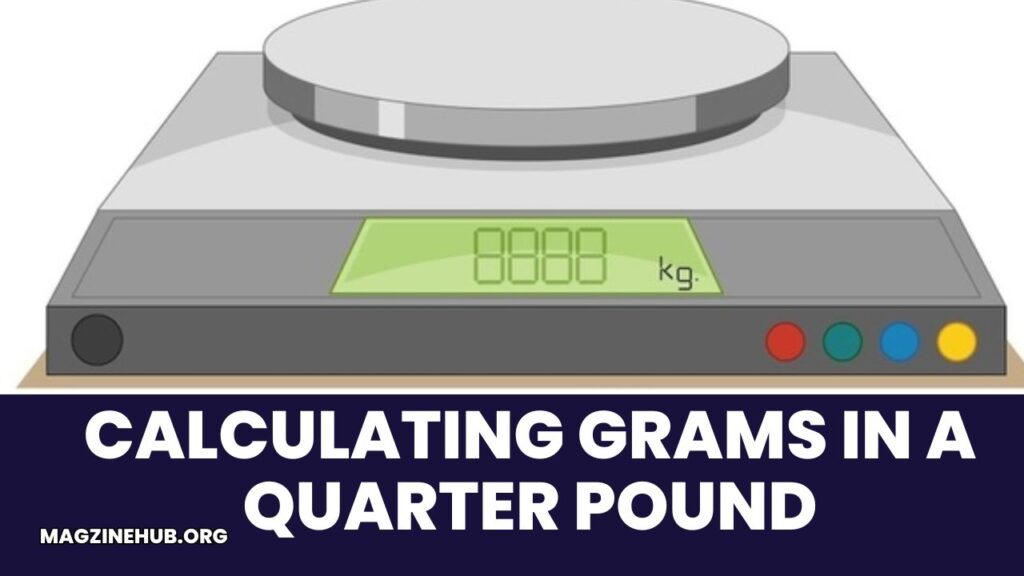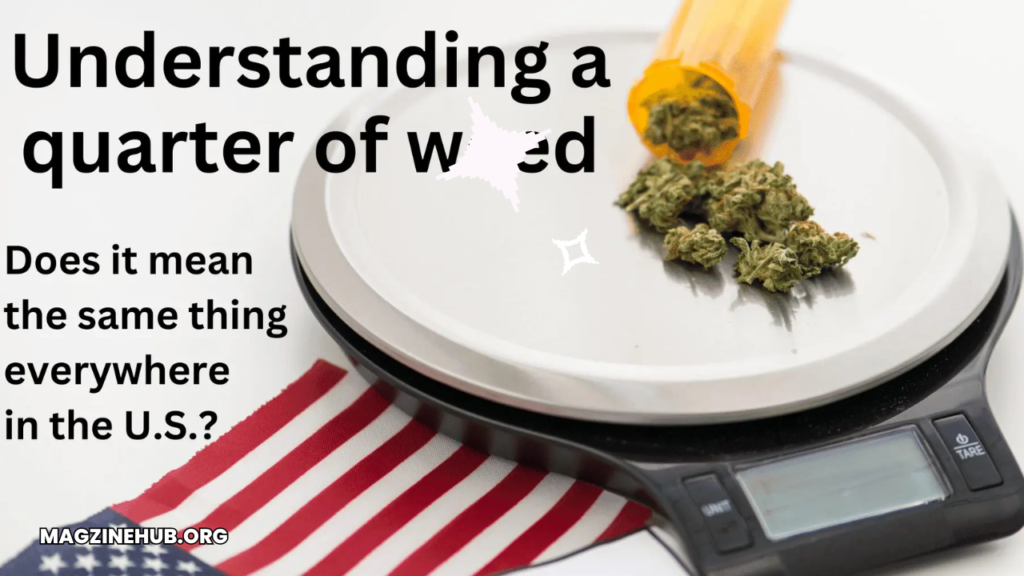Discover how many grams are in a quarter pound. Learn the easy conversion process and practical applications for cooking and more.
Understanding weight conversions is essential, especially in cooking, baking, and various industries. One common conversion people often inquire about is how many grams are in a quarter pound. Let’s delve into this topic to provide a clear and detailed answer.
Table of Contents
What is a Quarter Pound?
A quarter pound is a unit of weight commonly used in the United States and other countries that follow the imperial system of measurement. It represents one-fourth of a pound. To understand the conversion to grams, it’s essential to first comprehend the basic units involved.
Understanding Pounds and Grams
Pounds (lbs): The pound is a unit of weight in the imperial system, primarily used in the United States. One pound is equivalent to 16 ounces.
Grams (g): The gram is a metric unit of mass used globally in scientific and everyday applications. One kilogram equals 1,000 grams.
Conversion Factor
To convert pounds to grams, the standard conversion factor is used: 1 pound is approximately 453.592 grams. Knowing this, we can calculate the weight of a quarter pound in grams.
Calculating Grams in a Quarter Pound\

To find out how many grams are in a quarter pound, use the conversion factor:
Grams=Pounds×453.592\text{Grams} = \text{Pounds} \times 453.592Grams=Pounds×453.592
For a quarter pound:
Grams=0.25×453.592\text{Grams} = 0.25 \times 453.592Grams=0.25×453.592
Grams=113.398\text{Grams} = 113.398Grams=113.398
So, a quarter pound is approximately 113.398 grams.
Practical Applications
Cooking and Baking
In culinary practices, precise measurements are crucial for the success of a recipe. Converting a quarter pound to grams allows for more accurate ingredient measurements, ensuring consistency and flavor.
Scientific and Industrial Use
In scientific experiments and industrial applications, accurate weight measurements are vital. Understanding the conversion from pounds to grams ensures precise data recording and analysis.
Everyday Use
Knowing this conversion is also handy for everyday situations, such as grocery shopping, dietary planning, and portion control.
Why Use Grams Instead of Pounds?
While pounds are commonly used in the U.S., grams offer a higher precision due to the metric system’s smaller units. This precision is particularly beneficial in fields requiring exact measurements, such as pharmaceuticals, nutrition, and scientific research.
Conversion Table
For quick reference, here’s a conversion table for pounds to grams:
| Pounds | Grams |
| 0.25 | 113.398 |
| 0.5 | 226.796 |
| 1 | 453.592 |
| 2 | 907.185 |
| 5 | 2267.96 |
| 10 | 4535.92 |
Converting Other Weights
Knowing how to convert other common weights can be equally beneficial. For instance:
- Half Pound to Grams: 0.5 pounds x 453.592 grams = 226.796 grams
- One Pound to Grams: 1 pound x 453.592 grams = 453.592 grams
- Two Pounds to Grams: 2 pounds x 453.592 grams = 907.185 grams
Tools and Resources
Digital Scales
For precise measurements, digital scales are highly recommended. They provide accurate readings and often come with a switchable unit function, allowing you to easily convert between pounds and grams.
Conversion Calculators
Online conversion calculators can simplify the process of converting pounds to grams. Simply input the weight in pounds, and the calculator will provide the equivalent in grams.
Smartphone Apps
Numerous apps are available for smartphones that can help with weight conversions. These apps are convenient for quick conversions on the go, whether you’re cooking, shopping, or working in a lab.
Historical Context
The Origin of Pounds
The pound has a rich history dating back to ancient Rome, where it was known as the “libra,” hence the abbreviation “lb.” Over time, different regions adapted the pound, leading to variations in its definition and usage.
The Development of the Metric System
The metric system was developed in the late 18th century during the French Revolution. Its goal was to create a universal system of measurement based on decimal units, making it easier to understand and use. The gram, as part of this system, became a fundamental unit of mass.
Benefits of the Metric System
Global Standardization
The metric system is used worldwide, providing a standardized method for weight measurement. This consistency is crucial in international trade, scientific research, and everyday life.
Ease of Conversion
Metric units are based on powers of ten, making conversions straightforward. For instance, converting grams to kilograms simply involves dividing by 1,000.
Precision
The smaller units in the metric system, such as grams and milligrams, allow for more precise measurements, which is essential in fields like pharmacology and engineering.
The Future of Weight Measurement

Technological Advances
As technology evolves, new methods for measuring weight are emerging. Digital scales and sensors offer increased accuracy and ease of use.
Integration with Smart Devices
Modern kitchen appliances and lab equipment often come with integrated digital scales and wireless connectivity, enabling seamless weight measurement and data logging.
Education and Awareness
Promoting the understanding of weight conversions and the benefits of the metric system can lead to more widespread adoption, even in regions that primarily use the imperial system.
Common Questions and Misconceptions
Why Do Some Countries Still Use Pounds?
Despite the metric system’s advantages, countries like the United States continue to use pounds due to historical precedent and cultural familiarity. However, there is a growing trend towards dual-unit labeling and education to facilitate international standards.
Are There Different Types of Pounds?
Yes, there are different types of pounds, such as the avoirdupois pound, troy pound, and metric pound. The avoirdupois pound is the most commonly used in the U.S. and U.K., and it equals approximately 453.592 grams.
Can I Use the Same Conversion Factor for Ounces?
No, ounces have their own conversion factor. One ounce equals approximately 28.3495 grams. To convert ounces to grams, multiply the number of ounces by 28.3495.
Detailed Conversion Examples
Cooking Measurements
Example: A recipe calls for 0.75 pounds of flour. How many grams is this?
Grams=0.75×453.592=340.194\text{Grams} = 0.75 \times 453.592 = 340.194Grams=0.75×453.592=340.194
So, 0.75 pounds of flour is approximately 340.194 grams.
Nutritional Information
Example: A nutrition label states that a serving size is 0.2 pounds. How many grams is this?
Grams=0.2×453.592=90.7184\text{Grams} = 0.2 \times 453.592 = 90.7184Grams=0.2×453.592=90.7184
So, a serving size of 0.2 pounds is approximately 90.7184 grams.
Scientific Applications
Example: A chemical experiment requires 1.5 pounds of a substance. How many grams is this?
Grams=1.5×453.592=680.388\text{Grams} = 1.5 \times 453.592 = 680.388Grams=1.5×453.592=680.388
So, 1.5 pounds of the substance is approximately 680.388 grams.
Cultural Significance
Culinary Traditions
Different cultures have unique culinary practices, and understanding weight conversions can help bridge these traditions. For instance, a traditional American recipe measured in pounds can be accurately recreated in a country that uses the metric system.
International Trade
In global markets, accurate weight conversions are essential for fair trade practices. Understanding these conversions ensures that products are correctly priced and labeled, promoting transparency and trust.
Education and Learning
Teaching weight conversions in schools helps students develop a practical understanding of both the imperial and metric systems, preparing them for diverse applications in their future careers.
Challenges in Weight Conversion
Accuracy
Ensuring accuracy in weight conversion is crucial, especially in fields like pharmaceuticals and engineering. Small errors can lead to significant consequences, so precision tools and methods are essential.
Consistency
Maintaining consistency across different measurement systems can be challenging. Standardized conversion factors and clear labeling help mitigate confusion and ensure reliable results.
Adoption
Encouraging the adoption of metric units in regions that predominantly use the imperial system requires education and awareness campaigns. Highlighting the benefits of the metric system can facilitate this transition.
Conclusion
Knowing how to convert a quarter pound to grams is a practical skill that can be applied in many areas of daily life. By understanding the conversion factor and its applications, you can ensure accuracy in your measurements and enhance your knowledge in both imperial and metric systems.
For more insightful articles on various topics, check out the comprehensive Frank Csorba’s story on MagzineHub.
Additionally, for a deeper understanding of technological analyses and their applications, visit Techs Analysis.
Feel free to ask any further questions or explore more conversions to master your measurement skills.
